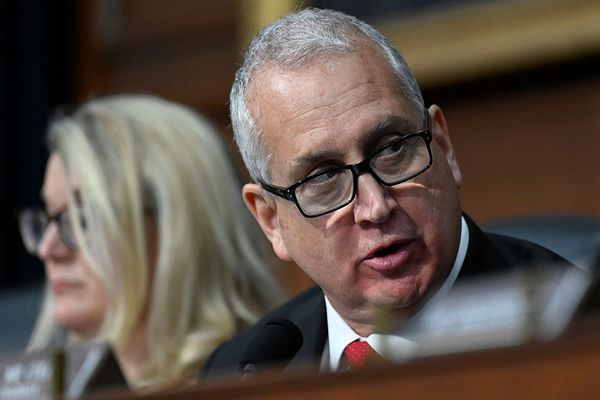The story so far: The U.S. Trade Representative (USTR) said in a report released last month that India was one of the most challenging major economies as far as IP protection and enforcement is concerned.
It has decided to retain India on its Priority Watch List along with six other countries- Argentina, Chile, China, Indonesia, Russia and Venezuela.
Among the issues raised in the report are concerns about what can be patented, waiting times for obtaining patents, reporting requirements, and data safety.
India had undertaken an intellectual property review exercise last year, where a Parliamentary Standing Committee examined the subject taking into account the views of the Department for Promotion of Industry and Internal Trade, Ministry of Commerce and Industry; Confederation of Indian Industry (CII); Department of Pharmaceuticals, Ministry of Chemicals & Fertilizers; Department of Agriculture Research and Education, Ministry of Agriculture and Farmers’ Welfare and Federation of Indian Chambers of Commerce and Industry (FICCI), as well as various legal associates.
The Committee also undertook a study visit and interacted with various stakeholders and representatives from the Maharashtra and Goa State governments.
The Indian patent regime
A patent is an exclusive set of rights granted for an invention, which may be a product or process that provides a new way of doing something or offers a new technical solution to a problem.
Indian patents are governed by the Indian Patent Act of 1970. Under the act, patents are granted if the invention fulfils the following criteria:
1. It should be novel
2. It should have inventive step/s or it must be non-obvious
3. It should be capable of Industrial application.
4. It should not attract the provisions of sections 3 and 4 of the Patents Act 1970.
India has gradually aligned itself with international regimes pertaining to intellectual property rights. It became a party to the Trade-Related Aspects of Intellectual Property Rights (TRIPS) Agreement following its membership to the World Trade Organization on January 1, 1995. Following this, it amended its internal patent laws to comply with TRIPS, most notably in 2005, when it introduced pharmaceutical product patents into the legislation .
India is also a signatory to several IPR related conventions, including the Berne Convention, which governs copyright, the Budapest Treaty, the Paris Convention for the Protection of Industrial Property, and the Patent Cooperation Treaty (PCT), all of which govern various patent-related matters.
An interesting point is that the original Indian Patents Act did not grant patent protection to pharmaceutical products to ensure that medicines were available to the masses at a low price. This was based on the recommendations of a 1959 commission chaired by the jurist Rajagopala Ayyangar, which had said that laws need to be designed “with special reference to the economic conditions of the country, the state of its scientific and technological advance, its future needs and other relevant factors…so as to minimize if not eliminate the abuses to which a system of patent monopoly is capable of being put.”
Patent protection of pharmaceuticals were re-introduced after the 2005 amendment to comply with TRIPS.
The challenges raised by USTR
Last month, the U.S. released its yearly Special 301 report, its annual review highlighting the state of intellectual property rights protection in different countries which are U.S. trading partners around the world.
In its India section, the report highlighted a range of issues in domains ranging from copyright and piracy to trademark counterfeiting and trade secrets, saying that India “remained one of the world’s most challenging major economies with respect to protection and enforcement of IP.”
It said patent issues continued “to be of particular concern in India,” highlighting the threat of patent revocations, lack of presumption of patent validity and narrow patentability criteria as issues which “impact companies across different sectors.”
The issue of narrow patentability criteria was again raised in relation to Section 3(d) of the Patent Act, with the report saying that in the pharmaceutical sector, the United States “continued to monitor the restriction on patent-eligible subject matter in Section 3(d) of the Indian Patents Act and its impacts.”
The Indian stance on narrow patentability
The USTR had also released a similar report in 2021, addressing much of the same concerns.
These, and general issues regarding IPR were extensively tackled by the Parliamentary Standing Committee which undertook a ‘Review of the Intellectual Property Rights Regime in India,’. The Committee tabled its findings before the Rajya and Lok Sabha in July last year.
This offered an insight into the landscape of Indian intellectual property law and where it is reasonably in sync with American patent laws and where it diverges.
One of the main points of contention between India and the U.S. has been Article 3(d) of the Indian Patent Act. This point is also brought up as an area of concern in both USTR reports mentioned here.
Section 3 deals with what does not qualify as an invention under the Act, and Section 3(d) in particular excludes “the mere discovery of a new form of a known substance which does not result in the enhancement of the known efficacy of that substance or the mere discovery of any new property or new use for a known substance or of the mere use of a known process, machine or apparatus unless such known process results in a new product or employs at least one new reactant” from being eligible for protection under patent law.
This was addressed by the Parliamentary Standing Committee as well, which pointed out that the section “acts as a safeguard against frivolous inventions in accordance with the flexibility provided in the TRIPS agreement”.
Section 3(d) prevents what is known as “evergreening” of patents.
Patent lawyer Rujuta Phadke explains evergreening in this context.
She points out that patents give you a monopoly over a chemical molecule for 20 years. So to continue protection under the patent regime, a pharmaceutical company may make certain minute modifications and reapply for a patent, allowing them to extend the life of patents about to expire. Such changes may be in the non-therapeutic or therapeutic element of the formula, new forms of release, new dosages, new combinations or variations, or new forms of the molecule, to name a few.
According to the Committee’s report, Section 3(d) allows for “generic competition by patenting only novel and genuine inventions.”
The Committee also refers to the seminal judgement in the case Novartis vs. Union of India, which upheld the validity of section 3(d). In this case, pharmaceutical company Novartis filed a patent for the final form of cancer drug Gleevec, which was challenged in the Supreme Court.
The Supreme Court held that Gleevec was merely a beta crystalline form of a known drug, namely, i matinib mesylate, and did not differ significantly in properties with regard to efficacy. Hence, it could not be patented in India.
TRIPS, the Doha Declaration and public health exemptions
The judgement also says that the section complies with the TRIPS agreement and the Doha Declaration.
The Doha Declaration on the TRIPS Agreement and Public Health was adopted on November 14, 2021, by the WTO member states. This declaration recognises the “gravity of public health problems affecting developing and least developed nations” and stresses the need for TRIPS to be part of the wider national and international action to address these problems.
Saying that the TRIPS agreement “does not and should not prevent members from taking measures to protect public health,” the declaration points out that the agreement “can and should be interpreted and implemented in a manner supportive of WTO members’ right to protect public health and, in particular, to promote access to medicines for all.”
These flexibilities include the right to grant compulsory licenses and the grounds for such licenses, the right to determine what “constitutes a national emergency or other circumstances of extreme urgency, including public health crises” and the right to establish its own regime for the exhaustion of intellectual property rights.
Compulsory licenses can be invoked by a state in public interest, allowing companies apart from the patent owner to produce a patented product without consent.
The United Nations Secretary-General’s High-Level Panel on Access to Medicines Report, 2016 also referred to the Novartis judgement which validated India’s stand on Section 3(d). The report recommends that member countries of WTO make full use of the policy space available in the TRIPS agreement by adopting and applying rigorous definitions of invention and patentability that curtail ‘evergreening’ and ensure that patents are only awarded when genuine innovation has occurred.
The Parliamentary Standing Committee argued that the provision was the catalyst for genuine innovations, preventing frivolous successive patents. It appreciated the fact that through Section 3(d), “India strives to balance the international patent obligations and its commitments to protect and promote socio-economic welfare and public health.”
It concluded that India must not compromise on the patentability criteria under Section 3(d) since as a sovereign country it has the “flexibility to stipulate limitations on grants of patents in consistence with its prevailing socio-economic conditions.” It said that this ensures the growth of generic drug makers and the public’s access to affordable medicines.
It indicated that India should resolve its differences with the U.S. regarding the disqualification of incremental inventions through bilateral dialogue.
Recently, India, TRIPS and issues related to the global patent regime became relevant after India and several other countries sought a temporary waiver of certain provisions of the TRIPS agreement to deal with the COVID-19 pandemic. Waiving these rights was sought to promote manufacturing of vaccines, therapeutics, and equipment to deal with the pandemic.
Issues pertaining to courts
The USTR report too highlighted issues relating to judicial delays. The 2015 Commercial Courts Act offered an opportunity to reduce these delays and increase expertise but only a limited number of courts have benefited under the Act, per the report. Jurisdictional challenges are reducing the courts’ effectiveness, according to rights holders, and courts are also suffering due to inadequate resources and training.
Moreover, the abolishing of the Intellectual Property Appellate Board (IPAB), resulting in the redirection of courts has “created uncertainty around adjudication of IP cases and copyright royalty rate setting,” says the report.
The Standing Committee too has expressed that the abolition of IPAB under Tribunals Reforms (Rationalisation and Conditions of Service) Ordinance, 2021 should be reconsidered in wake of its pivotal role in the adjudication of IPR appeals and cases.
“The overall scrapping of IPAB, which efficiently had been dealing with proceedings involving complex IPR issues, may create a void in the appellate resolution of cases leading to their shift to Commercial or High Courts thereby increasing pendency of cases,” it says.
It recommends that rather than being abolished it should be empowered and strengthened with more structural autonomy, infrastructural, and administrative reforms, while also ensuring that the required officials and staff are appointed in a timely way.
The committee also pointed out that no Judicial Impact Assessment or consultations with stakeholders were done before the abolishing of the tribunals, and strongly recommends that these should be undertaken prior to scrapping tribunals to gain a proper perspective about the same.
Positive steps
The report highlighted some positive steps taken by India in the recent past, such as our accession to the World Intellectual Property Organization (WIPO) Performances and Phonograms Treaty and WIPO Copyright Treaty, collectively known as the WIPO Internet Treaties, in 2018 and the Nice Agreement in 2019.
Additionally, it noted that India issued a revised Manual of Patent Office Practice and Procedure in November 2019 and revised Form 27 on patent working in October 2020. Form 27 allows a patentee to furnish information regarding the working of a patented invention on a commercial scale in India.
The Manual seeks to reduce redundancy of information filing by patent applicants in India by requiring patent examiners to look at the WIPO Centralised Access to Search and Examination system (CASE) and Digital Access Service (DAS) to find any information filed by a patent applicant in a different jurisdiction.
The Parliamentary Standing Committee too noted amendments pertaining to Form 27, under the Patents (Amendment) Rules, 2020. Some notable changes include allowing a single Form-27 to be filed for multiple related patents, filing of joint forms if there are more patentees and allowing authorised agents to submit forms.
There have also been some positive developments in the court system, per the report. After IPAB was abolished, the Delhi High Court created an IP division in July 2021, for which the draft rules have been released for comment in December 2021. Further, the Cell for Intellectual Property Rights Promotion and Management (CIPAM) has been promoting IP awareness across India.
In terms of collaborating with India, the United States Patent and Trademark Office (USPTO) and Department for the Promotion of Industry and Internal Trade (DPIIT) are in the process of sketching out a biennial work plan to further a Memorandum of Understanding (MOU) signed in December 2020 relating to IP technical cooperation mechanisms.
U.S. and India will continue to engage on IP matters, the report says, especially through the Trade Policy Forum’s Intellectual Property Working Group.







